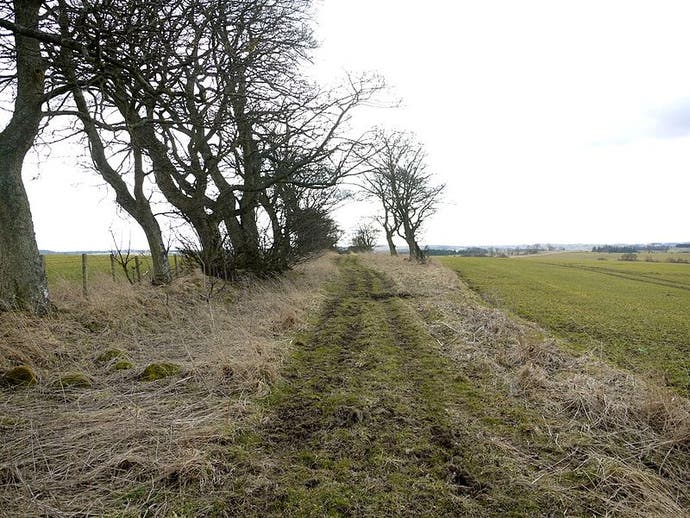Someone should make a game about: The Devil's Causeway
Roads around mountains 'cause we can't drive through.
Straight lines do not occur in nature. Beaches curve, roots twist. Ever put a spirit level on a cow? It's a bad idea, take it from me.
So when Germanic settlers arrived on the shores of modern day Northumberland, they were confused to find an 8ft wide band of ribbed stone running 55 miles from the Tyne to the Tweed. They assumed it was the work of otherworldly creatures - fairies and/or demons, as those were the days when Christian and Pagan mythology was still mixed together in a fun folkloric jambalaya - and avoided it like the plague, despite the myriad benefits of an all-weather highway. With fear and suspicion came a suitably sinister name: The Devil's Causeway.
You can't really blame the settlers. They were forest-dwelling, wood-carving, lumberjacking people, who thought about building out of stone like we might think about building out of cloud. They couldn't conceive of a civilisation that would do such a thing. And hey, it pays to be cautious! Remember the Citadel from Mass Effect? Sentient races discover a colossal space station floating at the center of the galaxy and move in, never suspecting that the whole thing is an ancient trap designed to ping its gormless occupants out into deep space. The Anglo-Saxons would have never fallen for that.
The minds behind the Causeway were less evil then the Reapers, though not entirely benign. Roman legions arrived on Britain's shores only a few decades after the life of Christ. Everywhere it went, the Empire left roads: built by rotating teams of soldiers at regulation width and height, guttered to avoid floods and straightened using an ingeniously simple device made of stone and string. They far outclassed the muddy dirt tracks that British natives were using at the time, and kept a steady stream of supplies open to the invaders.

As the army pushed northwards, further and further beyond the barriers of the so-called 'known world', things got tricky. The soldiers were spread too thin, on unfamiliar soil. Resource distribution was tough. Local barbarians started getting really barbaric. Eventually they had to draw a line, marking the northernmost tip of the Empire with a diagonal slash along the continent's thinnest point. Open an atlas: the line's still there.
Right at the edge of this line (possibly even beyond it) stood a stone fort. A military outpost on the bank of the Tweed, connected to the safety of home by that enigmatic Causeway - a single artery along which came supplies and company and news from home. I often think about those soldiers, the shivering Italian cavalrymen who stood guard at the end of the world. Were they lonely up here? Were they happy with how far they'd come?
At the edge of every open world game you'll find an invisible wall. Winds that push you back, monsters that pull you down into the sea. These walls drive me crazy. It's one thing to be locked out of a particular area until my stats are high enough. But show me a mountain I can't climb, a street I can't walk down, an ocean I can't cross, and every petulant fiber of my body will rebel.
The world is full of stuff we don't know, and stuff we don't know that we don't know, and stuff that we knew once but now neglect to recall. When building new universes, it's useful to retrace our steps - and wonder at the distance we still have to go.









